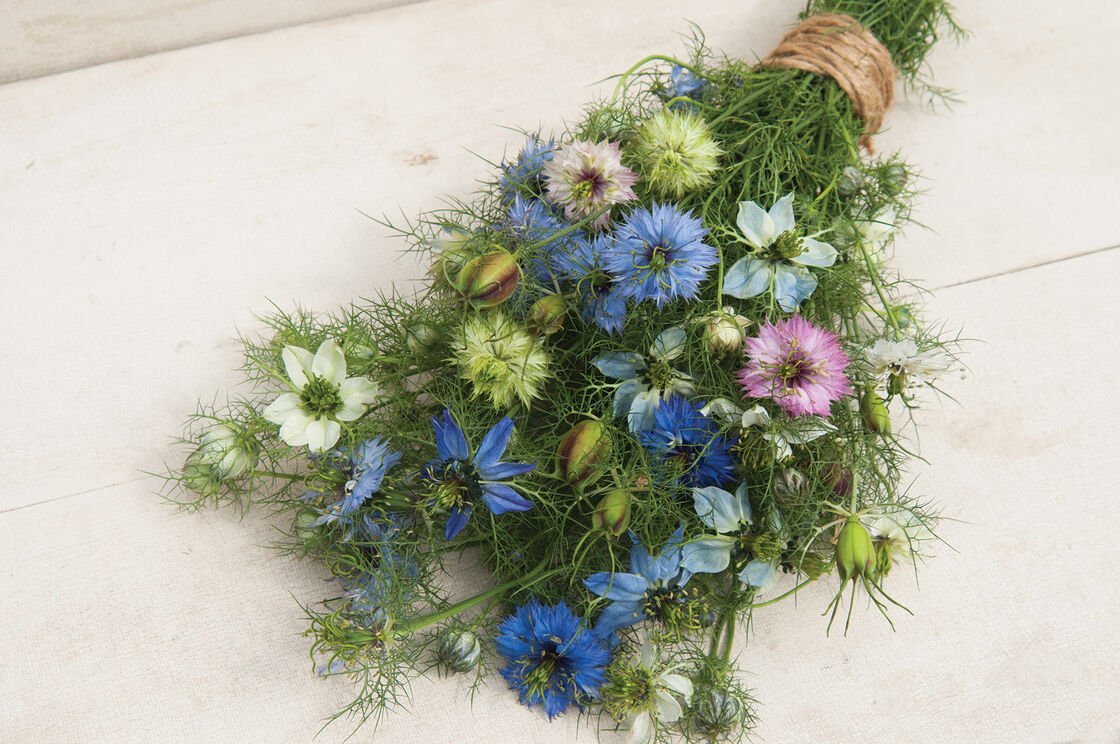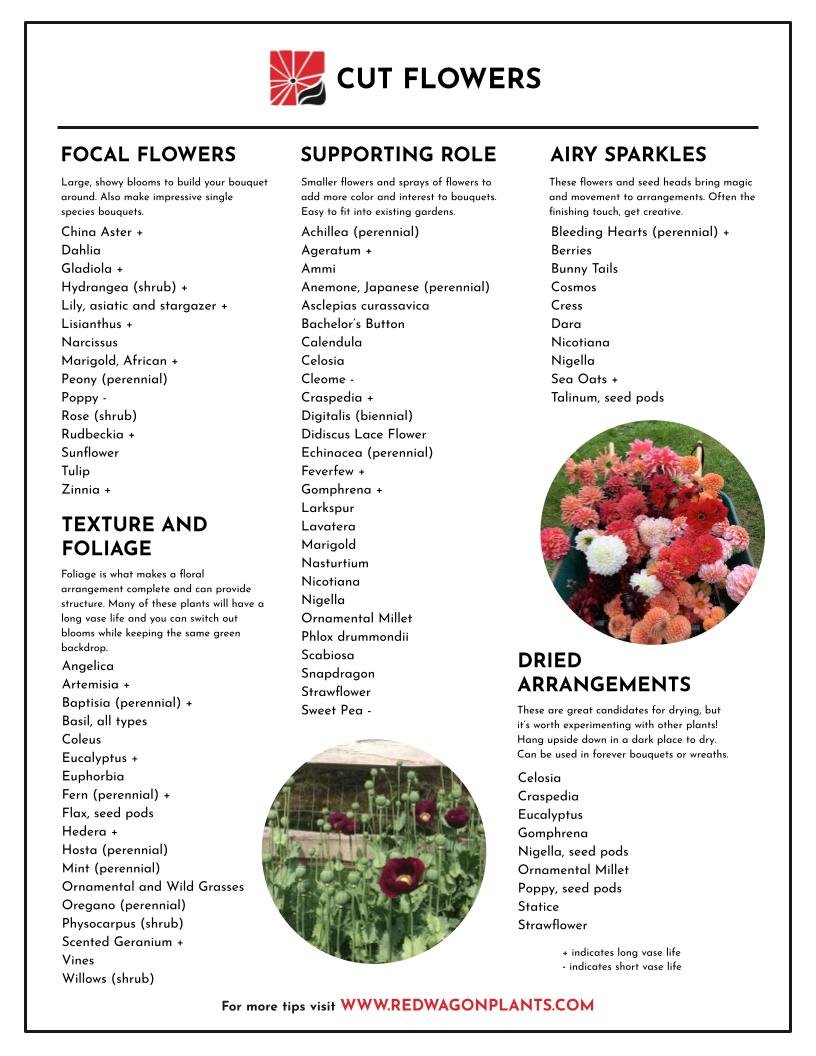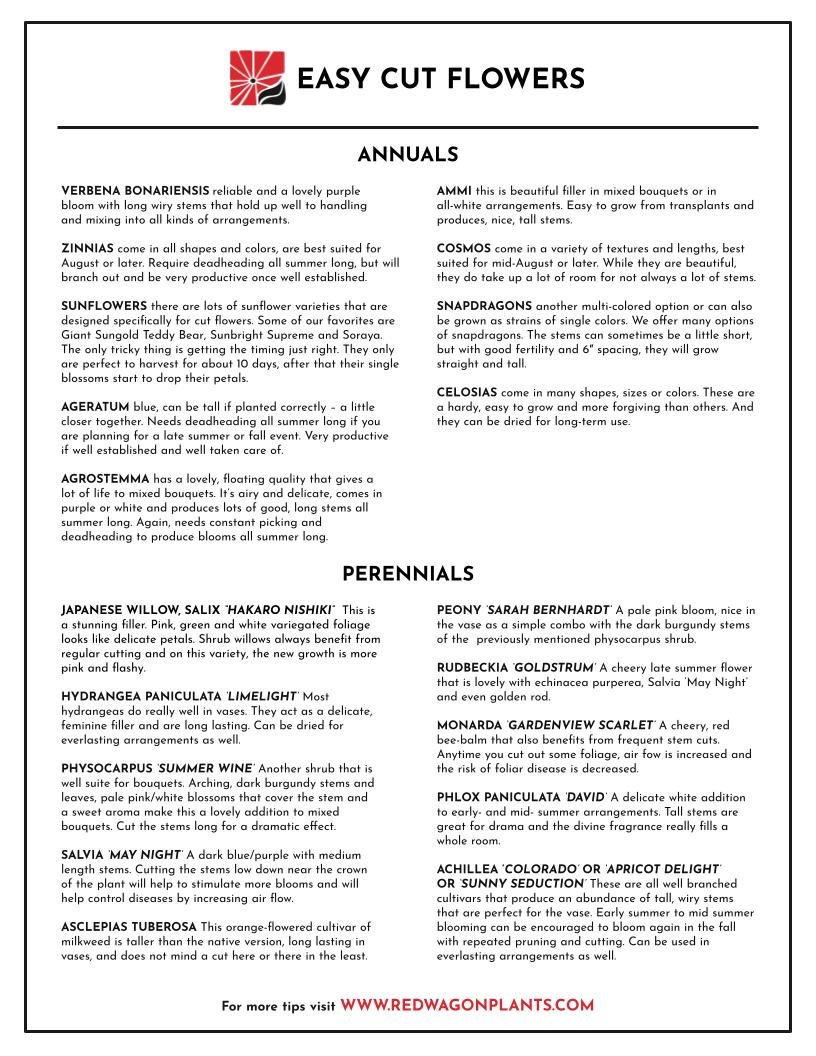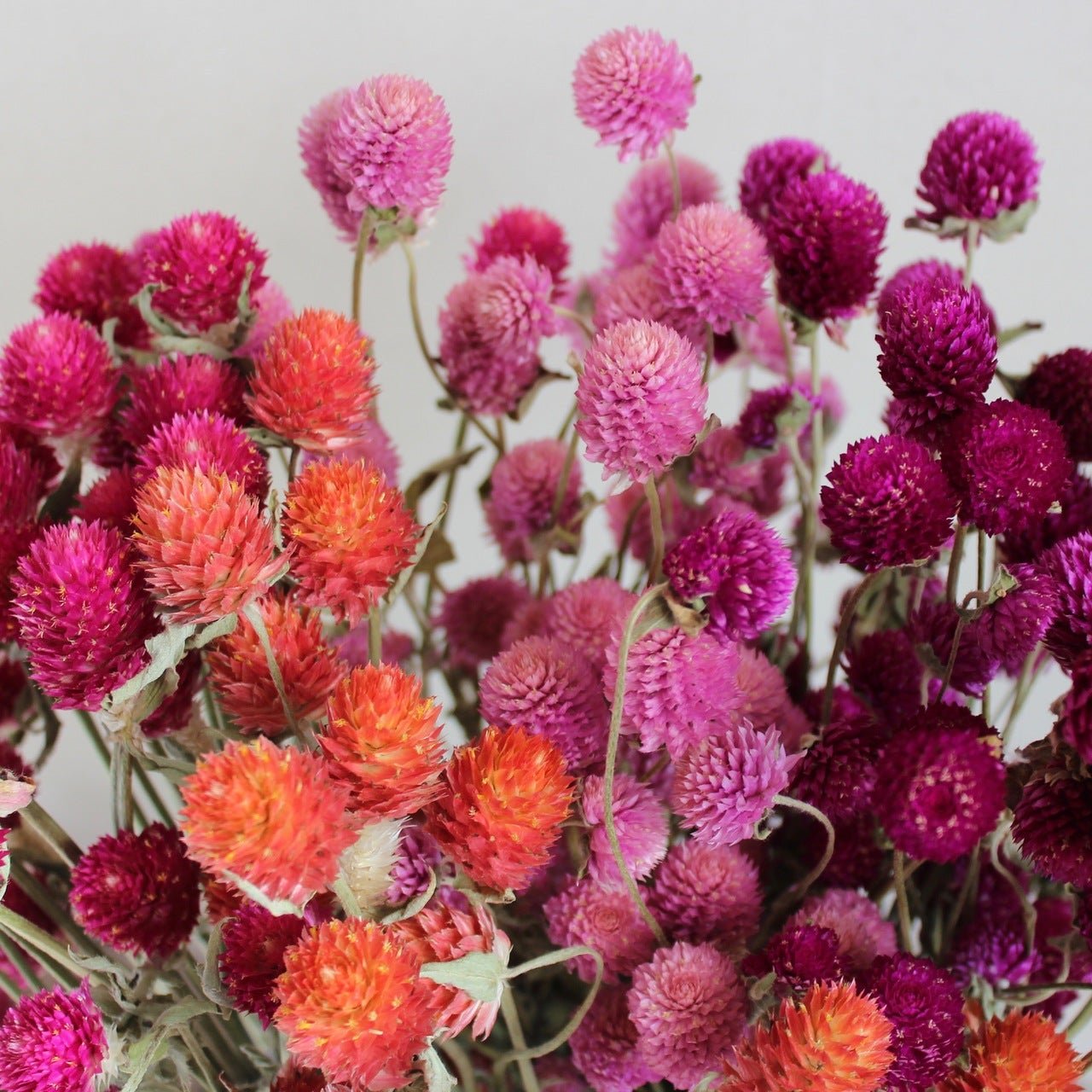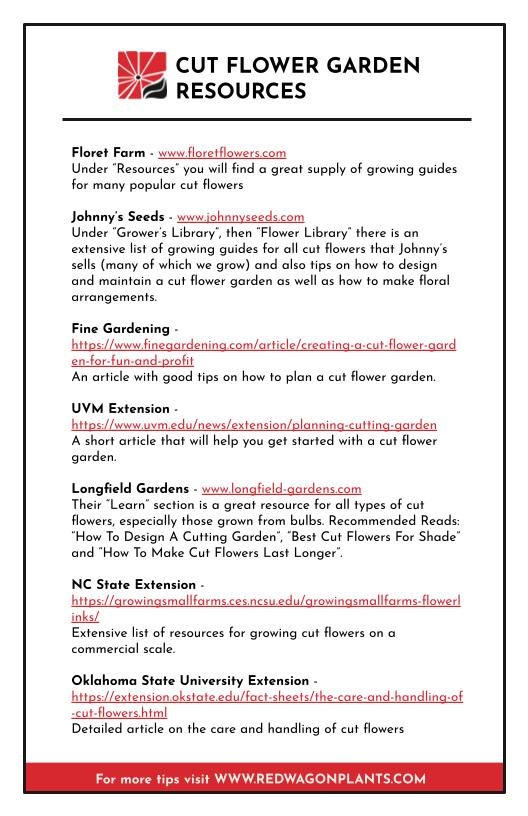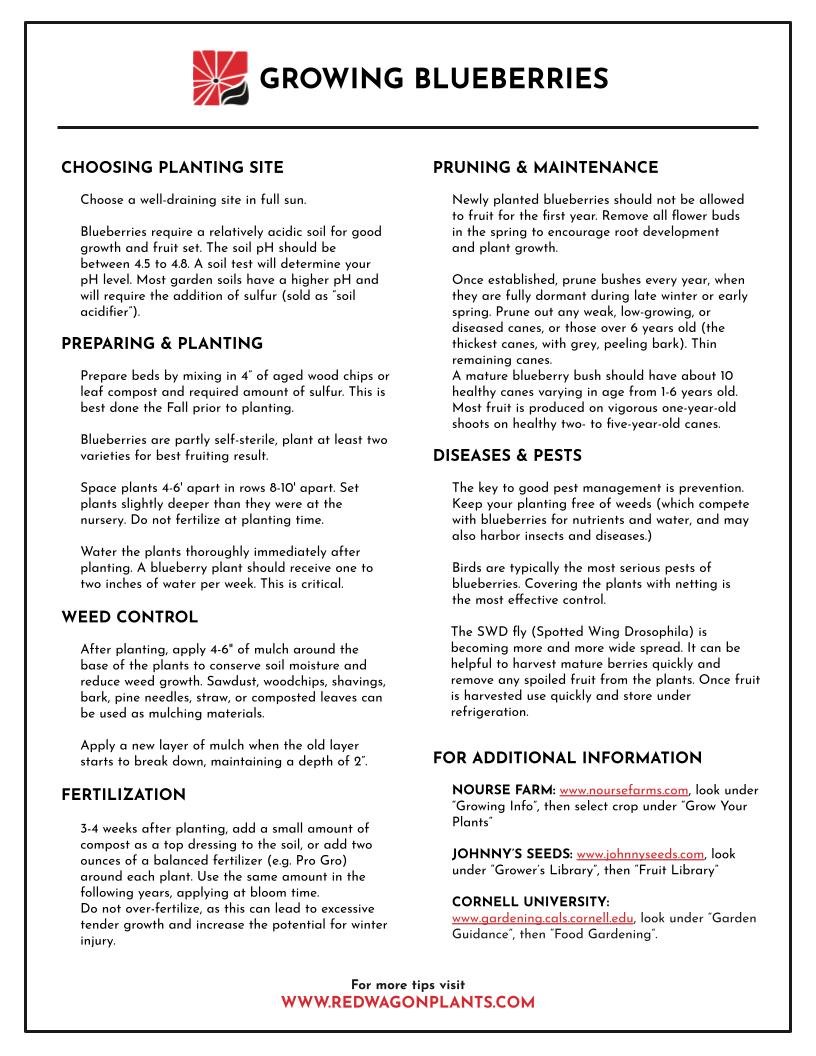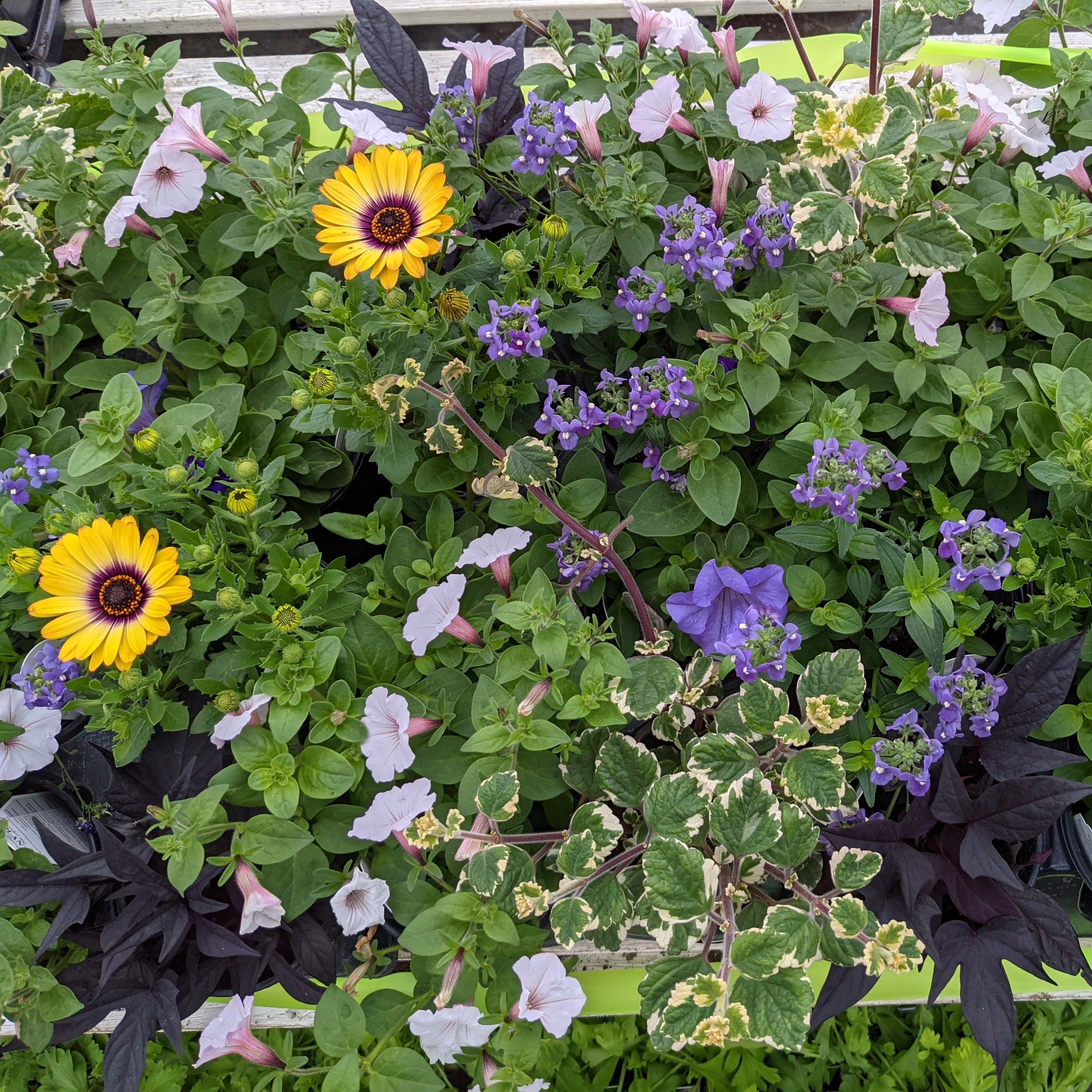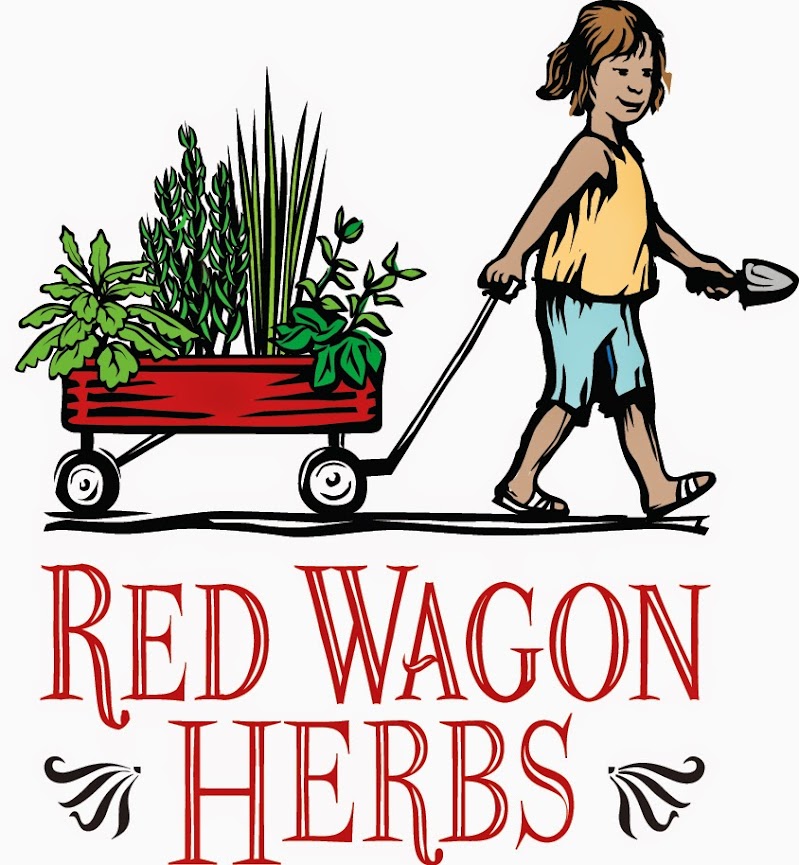Nigella add lots of texture with their lacey leaves, bright blooms and geometric seed pods
Who doesn’t love a bouquet of fresh flowers brightening up their indoor living space?
Whether you’re new to growing your own cut flowers or want to expand your bloom options, Red Wagon Plants has a wide selection of flower starts for your garden! We’ve put together a list of plants available at our greenhouses this season and sorted them by function in a flower arrangement. If you’re new to growing cut flowers, I recommend starting with the ones marked for long vase life. Zinnias and Verbena bonariensis for example, are great staples that we like to grow in our display garden every year. They bloom proliferously throughout the summer and have long stalks to make bouquets of any size. They also are great attractors for pollinators!
The images above are Breadseed Poppies and a wheelbarrow full of Dahlias from Lily’s garden.
To find pictures of all the above-mentioned plants, visit our “What We Grow” page on our website.
A few top picks are described in the following guide:
Gomphrena make great dried arrangements
If you would like more inspiration and guidance on how to grow, harvest and arrange your cut flowers, below are some of our favorite resources. And as always, stop by at our greenhouses in Hinesburg and let us help you make the best selection for your garden.
This post was written by Kat Consler.

